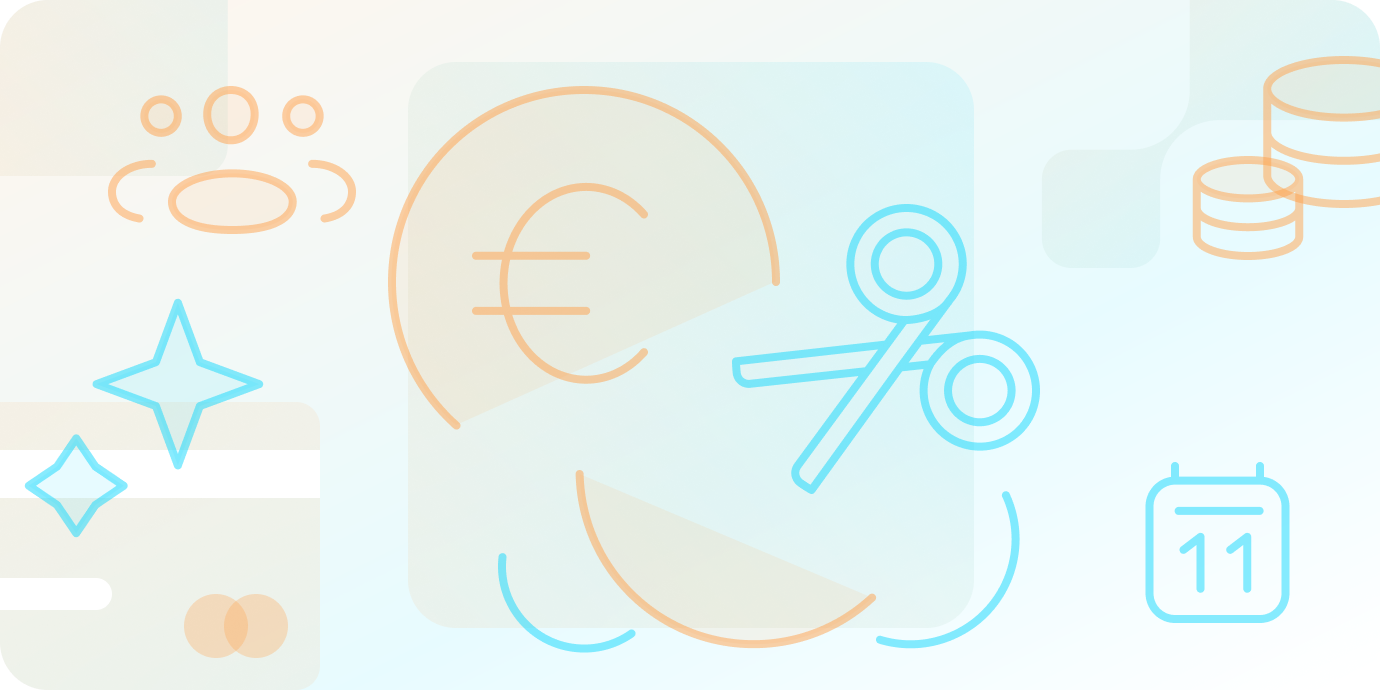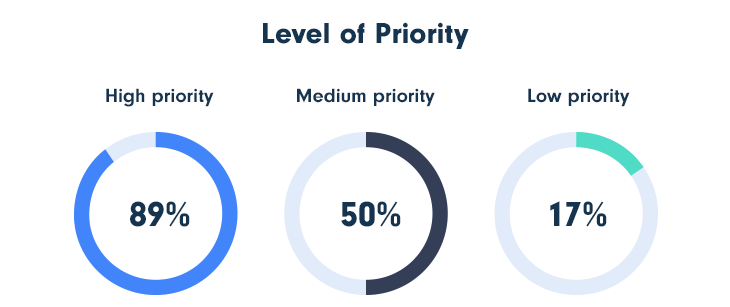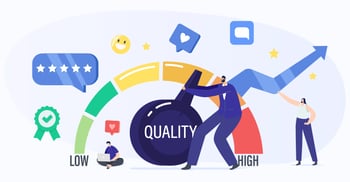SaaS Spend Optimization: A 5-Step Guide to Cut Costs

SaaS spend optimization is the process of cutting unnecessary software expenses while maximizing the value of the tools you actually use. With the right strategy, businesses can save money, reduce security risks, and improve operational efficiency.
What is SaaS Spend Optimization?
SaaS spend optimization involves identifying, managing, and reducing software expenses by eliminating underused or redundant subscriptions. It’s a core part of Technology Value Optimization (TVO), which helps organizations control costs, boost ROI, and improve software utilization.
Why Does SaaS Spend Optimization Matter?
Most businesses are wasting money on unused software. As of 2024, over 53% of SaaS licenses go unused, costing organizations approximately $21 million annually in wasted spend.
This growing problem—called SaaS sprawl—creates financial waste, compliance risks, and productivity issues.
4 Reasons to Prioritize SaaS Optimization
If you sell video games online, SaaS or software, due to the increased level of competition on the market, you are tempted to use all sorts of apps that guarantee greater visibility.
There are 4 key reasons why it’s worth focusing your attention on SaaS optimization and figuring out exactly what you’re spending on your SaaS usage.
1. Boost Team Productivity
Cutting duplicate or irrelevant apps ensures your team uses the right tools at the right time. This reduces confusion and boosts collaboration across departments.
2. Establish Software Priorities
Track usage and spending data to understand which tools offer the most value. Use this data to inform renewals, cancellations, and upgrades.
3. Minimize Security Risks
Unused or unauthorized apps can expose your business to data breaches. With full visibility, you can restrict access, eliminate shadow IT, and protect sensitive data.
4. Cut Unnecessary Costs
Unused licenses are a silent budget killer. Proactive license management and app audits lead to measurable cost reductions.

How To Optimize Your SaaS Spend
Step 1: Make Your SaaS Stack Visible
Create an inventory of every app, license, contract, and cost. Without visibility, optimization is impossible.
Step 2: Audit Regularly
Conduct audits every 3–6 months. SaaS needs evolve quickly, and regular reviews keep your stack lean and aligned
Step 3: Set Priorities:
Prioritize software based on:
Cost
Renewal dates
Number of users
Business value
Focus on the highest-cost apps first for quick wins.
Step 4: Set Usage Goals
Set a target SaaS utilization rate (e.g., 90%). Track your current usage and aim to close the gap through smarter license allocation.
Step 5: Eliminate Waste
Centralize software purchases. Don’t let employees buy SaaS tools ad hoc. Create a governance team to approve and manage purchases.

How to Handle Unauthorized or Redundant Apps
Unauthorized apps may be tools purchased by employees without approval or ones that duplicate existing functionality.
Best Practices
Communicate with employees to understand their needs
Replace overlapping tools (e.g., Dropbox vs. Google Drive)
Monitor logins to identify low-use or rogue tools
Remove former employee access to avoid data and cost risks.
eCommerce Partner
Thrive with the industry's most innovative all-in-one SaaS & Digital Goods solution. From high-performing payment and analytics tools to complete tax management, as well as subscription & billing handling, PayPro Global is ready to scale your SaaS.
Sell your SaaS globally with PayPro Global!
Proactive License Management Strategies
Check License Usage
Use login and activity data over 30, 60, or 90 days to assess actual usage. Downgrade or reassign licenses where necessary.
Tailor Licenses by Role
Not every employee needs premium features. Match license types to usage patterns.
Use Automation
Leverage SaaS management tools or platforms to automate license assignments based on usage data.
Promote Company-Wide Adoption
Adoption increases ROI. Encourage the use of selected tools by:
Launching internal campaigns
Holding training sessions
Appointing team champions for new apps
Manage Renewals with a Calendar
Track renewal dates to avoid unwanted auto-renewals. Use tools to consolidate this data and get alerts in advance.
Plan for Future SaaS Needs
As your business scales:
Forecast department-level software needs
Monitor usage trends to anticipate expansion
Adjust subscriptions proactively
How a Merchant of Record (MoR) Like PayPro Global Supports SaaS Spend Optimization
A Merchant of Record (MoR) handles the entire transaction lifecycle, including payment processing, tax compliance, fraud prevention, and more. For SaaS businesses, MoRs offer major cost-saving and optimization benefits.
How MoRs Like PayPro Global Help
PayPro Global's MoR offers:
Simplified Payment & Compliance
Automates global tax management (VAT, GST, etc.)
Handles currency conversions and exchange risks
Reduces legal liability for compliance and billing
Subscription & Revenue Recovery Automation
Prevents involuntary churn with smart dunning workflows
Supports flexible billing models (e.g., usage-based, tiered)
Recaptures failed payments automatically
Advanced SaaS Analytics
Get actionable insights into churn, revenue, MRR, and LTV
Identify underperforming regions, plans, or user segments
Optimize pricing and feature sets based on real data
Centralized Software Stack
Reduce 3rd-party dependencies with one full-service platform
Unify billing, subscriptions, trials, upsells, renewals, and reporting
Eliminate redundant tools with a single MoR solution
Why Choose PayPro Global for SaaS Spend Optimization?
PayPro Global is more than just a billing tool. It’s a full-service MoR platform designed specifically for SaaS, software and video games companies. With PayPro Global, you get:
✅ SaaS subscription billing
✅ Automated renewals, complete tax management and trial management
✅ Built-in compliance across global markets
✅ Customizable pricing and discount models
✅ Business intelligence dashboards for optimization
eCommerce Partner
Thrive with the industry's most innovative all-in-one SaaS & Digital Goods solution. From high-performing payment and analytics tools to complete tax management, as well as subscription & billing handling, PayPro Global is ready to scale your SaaS.
Sell your SaaS globally with PayPro Global!
Conclusion
SaaS spend optimization isn’t just about cutting costs — it’s about making smarter choices with the tools you invest in. By gaining visibility, removing redundancy, managing licenses effectively, and leveraging MoR platforms like PayPro Global, you set your business up for leaner operations and long-term success.
Ready to sell software online internationally now that you know how to optimize your SaaS spending? Get in touch with PayPro Global , your full-service eCommerce partner.
FAQ
FAQs
What is SaaS spend optimization?
SaaS spend optimization is the process of cutting costs on software subscriptions while maximizing the value of the tools you use. It involves identifying and eliminating underused or redundant applications to improve your ROI.
Why is managing SaaS spend important?
It's important because most companies waste money on unused software. With over 53% of licenses going unused, businesses lose millions annually. Poor SaaS management also creates security risks and lowers team productivity.
What is SaaS sprawl?
SaaS sprawl is the uncontrolled growth of software applications in a company. It happens when new tools are added without oversight, leading to redundant apps, wasted money, and significant security gaps.
How do I start optimizing my SaaS spend?
The first step is to create a complete inventory of every app, license, and contract. You cannot manage your software spend until you have full visibility of what your company is using and paying for.
How can I improve my SaaS license utilization?
Improve utilization by tracking login data to find inactive users. From there, you can downgrade or reassign licenses to employees who actually need them. Avoid giving every user a premium license by default.
Is SaaS spend optimization only for large companies?
No, it's essential for businesses of all sizes. Even for small companies, eliminating waste from unused software can free up significant cash flow and establish good financial habits as you grow.
Hanna Barabakh
Hanna Barabakh is a language and content specialist passionate about SaaS, technology, and e-commerce. Her expertise in multilingual content, connected to her background in Lexicography and Translation Studies, allows her to communicate complex ideas across cultures easily. She uses her knowledge to create engaging content that resonates with global audiences. In her spare time, she enjoys reading and exploring new ideas.
-
1.Explore PayPro Global's Solutions: See how our platform can help you streamline your payment processing and boost revenue.
-
2.Get a Free Consultation: Discuss your specific needs with our experts and discover how we can tailor a solution for you.
-
3.Download our Free Resources: Access valuable guides, checklists, and templates to optimize your online sales.
-
4.Become a Partner: Expand your business by offering PayPro Global's solutions to your clients.
- Businesses that want to reduce expenses and get the most out of their software investments must optimize their SaaS spend.
- Key optimization tactics include proactive license management, regular SaaS audits, and getting rid of unnecessary programs.
- Consider using a Merchant of Record (MoR) such as PayPro Global to manage subscriptions, payments, and compliance.
Get the latest news



